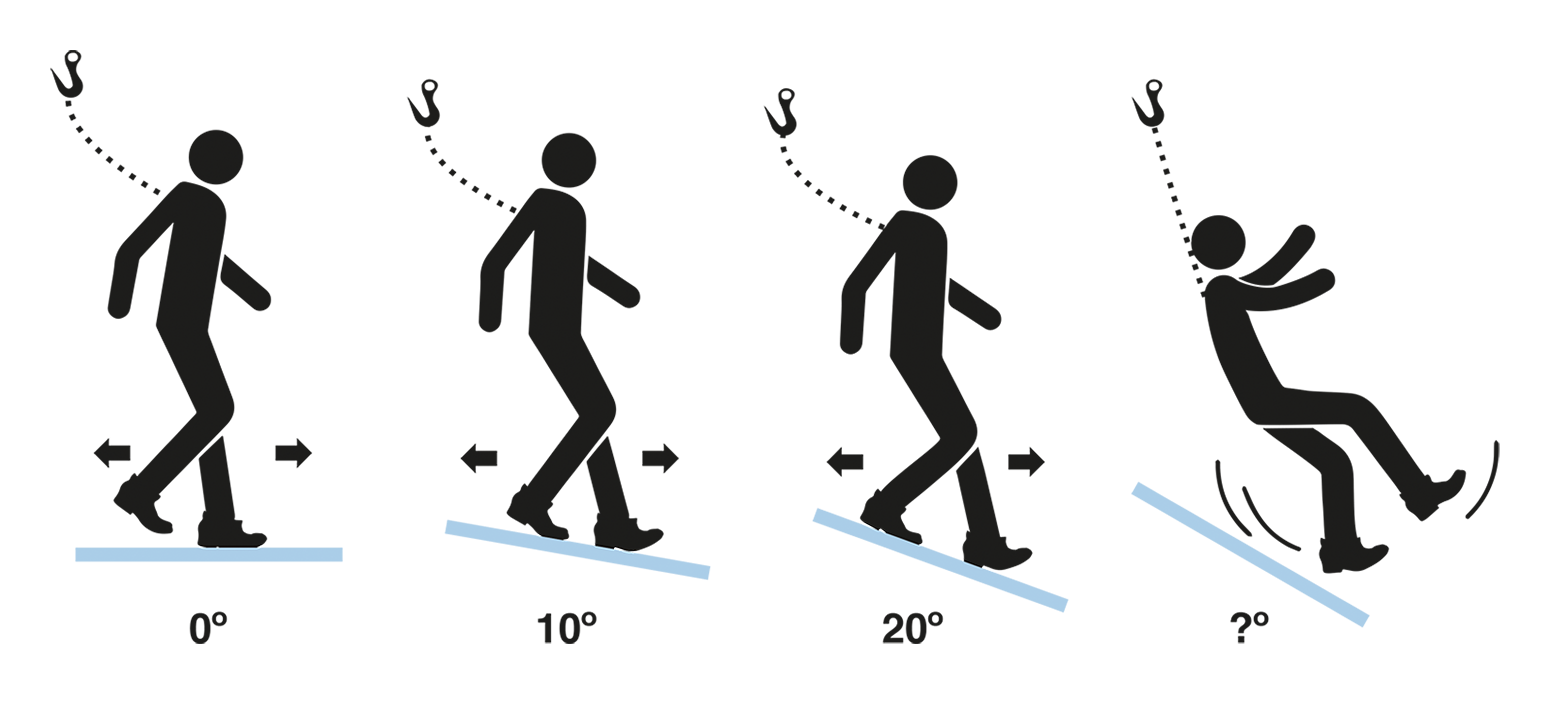
ANTI-SLIP SAFETY
Grating is most commonly used as a surface material for steps and platforms on outdoor stairs. The gratings have a support bar and a cross bar, which can increase the grip under the shoes thanks to different teeth. Even if you choose a smooth plate or other surface we use, they have different properties that affect friction or slip resistance.
Slipping accidents on stairs happen much more often than trips and falls. The distance between steps and the depth of the step also affect the risk of accidents.
To measure the risk of slipping, ramp tests are carried out in a laboratory. In this way, the surface material can be classified according to the risk of slipping. In general, the friction force is influenced by the applied load, the temperature and the surfaces of the materials. Therefore, tests should be carried out in real conditions to truly verify safety. The R classification tests for slip hazard are carried out with shoes.
Property owners are responsible for non-slip surfaces and may be liable for damages in the event of an accident. Therefore, if there is a risk of slipping, it is important to choose the right type of surface for the stairs.

Oil is applicated on the ramp in the right floor type and the test person walks in small steps back and forth with shoes until they slip (the test person is wearing a safety wire to prevent slip damages). The computerized readout then determines the R-classification based on the slipping angle. The rating starts with R9 which corresponds to the worst slip resistance and continues to the best slip resistance, classification R13.
R-CLASSIFICATION

Straight and spiral staircases made of high strength steel, with easy and quick assembly.
From one of the leading staircase manufacturers in Europe.
